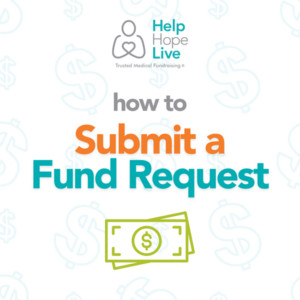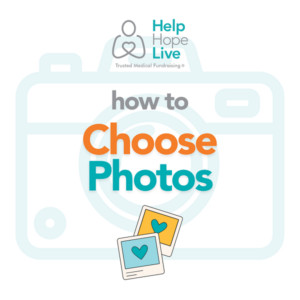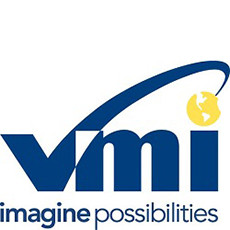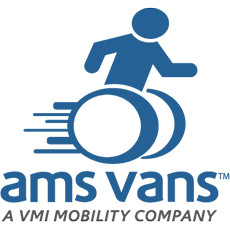In this blog post, you’ll learn how to write a fundraising letter to share your Help Hope Live campaign with your community, including tips and a sample letter.
Where to Share Your Fundraising Letter
- You can print and mail your letter.
- You can share it via email.
- You can also do both, but do not send the same letter to the same person both ways.
- We recommend that you do not use your letter as a social media post. Instead, come up with a modified and shortened version so it will be a better fit for social media platforms and easier to read, including on a mobile device. Use our social media guides for tips and examples.
Get Feedback on Your Letter
Your Client Services Coordinator is here to help you develop a successful fundraising strategy, and that includes reviewing any materials you create.
Once you have drafted your fundraising letter, or if you get stuck, ask your Coordinator to review it for you.
You can also get feedback from friends or family members—they know your community better than we do and may have suggestions, too.
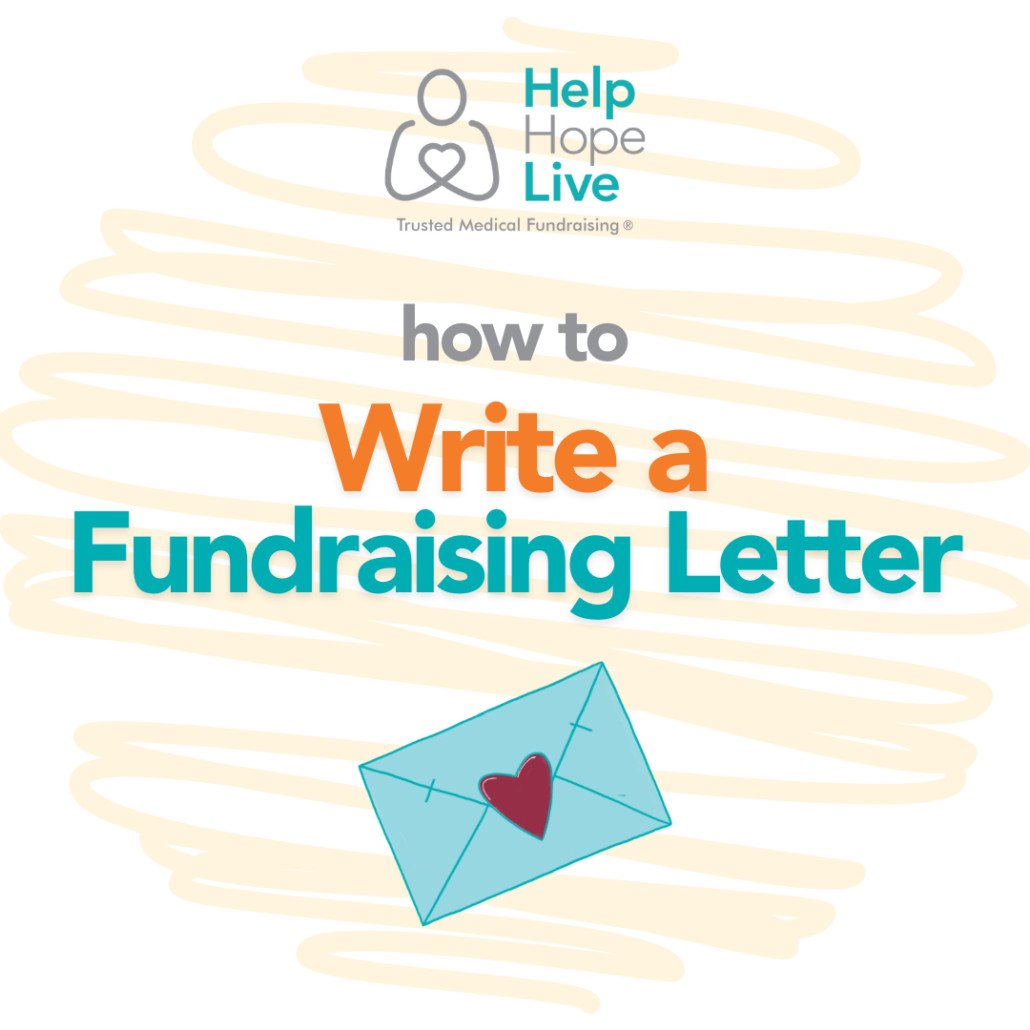
Step 1: Identify Your Audience
Each letter recipient should be able to get enough information from your letter to understand who you are and what you are asking.
Think about how well your letter’s recipients know your situation before you start writing.
Is your letter going out to…
- People who know you very well?
- People who have been in touch with you or seen you recently?
- People who may not be aware of your medical situation yet?
- People who may be friends-of-friends or acquaintances?
- People who have already supported you in the past—whether personally or through a previous fundraising campaign? (You’ll want to recognize this and say thank you in your letter.)
If you’d like to send your letter to multiple different groups of people with different connections to you, you can modify the letter a little bit for each audience.
Step 2: Summarize Your Story and Updates
It may be helpful to start by making a list of the 5 most important things someone needs to know about your medical situation or your latest updates. You can summarize each thing in a sentence or two.
Your letter does not need to include every detail about your story so far. It’s important to keep your letter fairly short and easy to read. You can use your campaign story or Updates to share more details. Click here for tips on writing your campaign story.
As you work on keeping your letter short, don’t sacrifice any key details recipients need to know (more on that next), and don’t make your letter so short that it no longer has an emotional impact.
A few sentences may be enough to draw recipients into your story and get them caught up on the reality of your day-to-day life and medical situation. If it takes several paragraphs to get that reality across, that’s fine, too.
Step 3: Include These Key Details
As a starting point for your letter, we recommend thinking about including these details:
- Your name and why you are writing this letter
- A summary of your medical situation
- A summary of why you need to fundraise
- How and where recipients can donate (details on that are coming next)
- Why it means so much to you to have their support—OR how they have already made a difference in your life
Step 4: Include Clear Instructions
It’s important for letter recipients to know exactly what they can do to help you right now.
Tell recipients that they can make a tax-deductible donation in your honor through the nonprofit Help Hope Live. Then give them instructions below for exactly how to do that:
- If you are planning to share your letter digitally (not print it out), you will want to include a link/URL to your Campaign Page.
- If you are planning to print your letter, tell recipients to visit www.helphopelive.org and use the gray Find a Campaign box to search for your name. Include your full name here so they can follow the directions right away.
For printed letters, you can also ask your Coordinator for a QR code to add in the corner so recipients can scan to get right to your Campaign Page.
If there are other ways they can help, such as contacting you to get involved in planning fundraisers, add that information, too. If you do, include contact information so they can email or call you.
Step 5: Consider Personalizing
Personalizing letters will take extra time. However, personalization will significantly increase the chances that a recipient will take the time to donate, reply, or simply remember you and your campaign.
How to Personalize Printed Letters
Have you ever gotten a surprise birthday card or letter in the mail? In our digital age, it often feels extra-special to be personally acknowledged on paper.
Here are three personalization options for printed letters:
- Handwrite the recipient’s name and address on the envelope.
- Handwrite a “Dear Recipient’s Name” or “Hello, Recipient’s Name” at the top of each letter.
- Handwrite a PS at the top or bottom of the letter that specifically mentions a connection you have with that person or a recent update in their life. For example, congratulate them on a graduation, a new puppy, or beautiful vacation photos you saw on Instagram.
How to Personalize Digital Letters
It goes a long way when you personalize an email, and it makes it clear to each recipient that you have chosen specifically to reach out to them for a reason. Here’s how to personalize a digital letter:
- Send emails out personally to key members of your community instead of as part of an email blast to multiple people at once.
- For those recipients, add “Dear Recipient’s Name” or “Hello, Recipient’s Name” at the top of the email.
- Add a PS at the top or bottom of the email that specifically mentions a connection you have with that person or a recent update in their life. For example, congratulate them on a new job, a new Facebook profile photo, or their beloved sports team winning the Super Bowl.
Sample Fundraising Letter
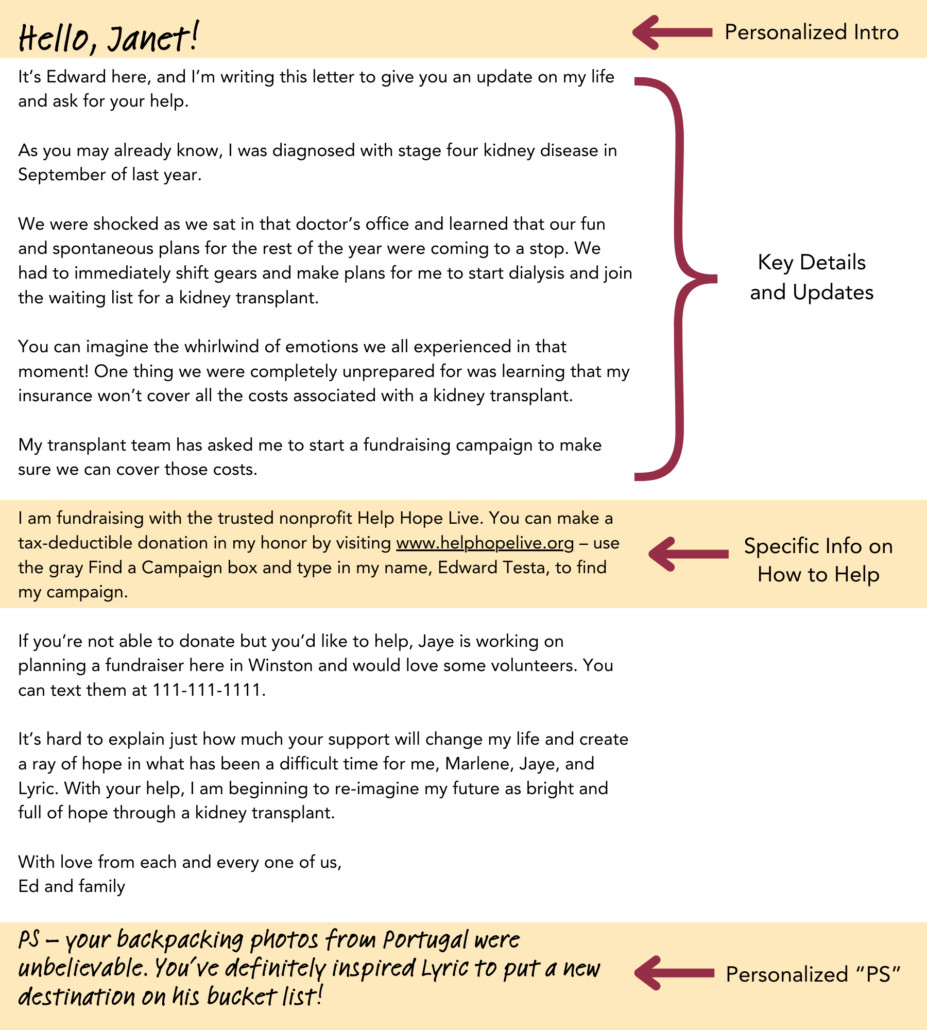
Hello, Janet!
It’s Edward here, and I’m writing this letter to give you an update on my life and ask for your help.
As you may already know, I was diagnosed with stage four kidney disease in September of last year.
We were shocked as we sat in that doctor’s office and learned that our fun and spontaneous plans for the rest of the year were coming to a stop. We had to immediately shift gears and make plans for me to start dialysis and join the waiting list for a kidney transplant.
You can imagine the whirlwind of emotions we all experienced in that moment! One thing we were completely unprepared for was learning that my insurance won’t cover all the costs associated with a kidney transplant.
My transplant team has asked me to start a fundraising campaign to make sure we can cover those costs.
I am fundraising with the trusted nonprofit Help Hope Live. You can make a tax-deductible donation in my honor by visiting www.helphopelive.org – use the gray Find a Campaign box and type in my name, Edward Testa, to find my campaign.
If you’re not able to donate but you’d like to help, Jaye is working on planning a fundraiser here in Winston and would love some volunteers. You can text them at 111-111-1111.
It’s hard to explain just how much your support will change my life and create a ray of hope in what has been a difficult time for me, Marlene, Jaye, and Lyric. With your help, I am beginning to re-imagine my future as bright and full of hope through a kidney transplant.
With love from each and every one of us,
Ed and family
PS – your backpacking photos from Portugal were unbelievable. You’ve definitely inspired Lyric to put a new destination on his bucket list!
What to Read Next:
- Share your story with our social media instructions.
- Customize your Campaign Page with our guide.
- Choose the right photos for your Campaign Page with our tips.
- Subscribe to our Latest so we can email you when new fundraising guides like this one are released!
